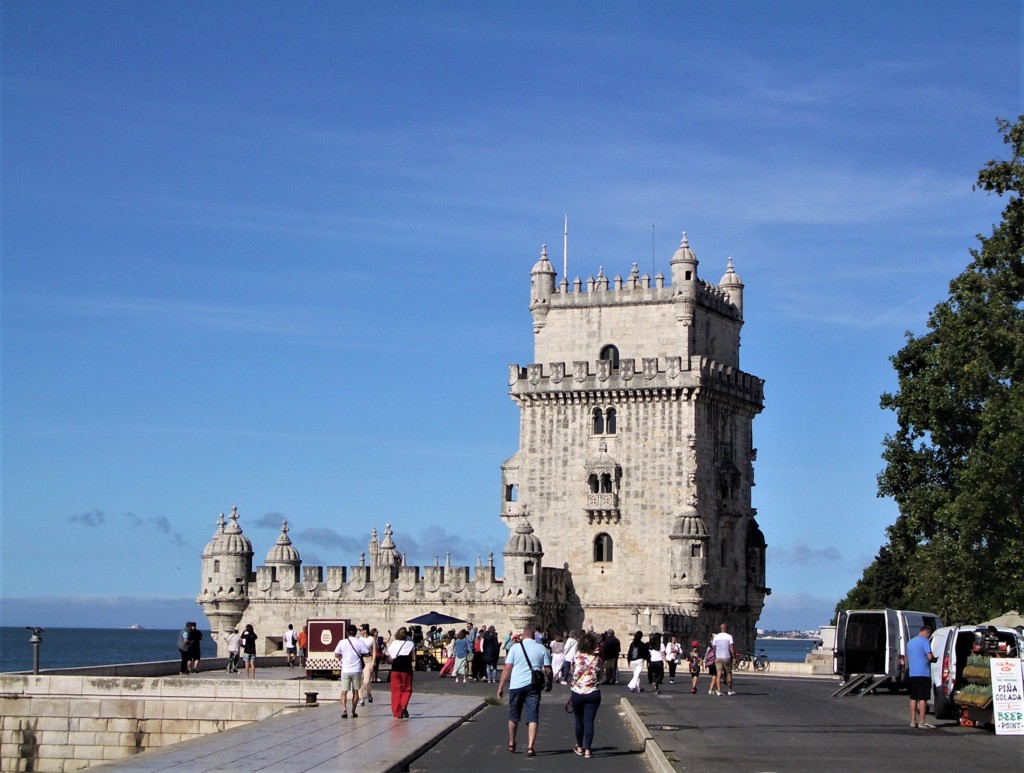
Grove Koger
Maggie and I paid a visit last year to what is probably Lisbon’s most famous landmark, the Belém Tower. The city’s residents know it as the Torre de Belém, or, officially, as the Torre de São Vicente—a reference to the city’s patron saint.
The four-story structure was built from local limestone in the early sixteenth century by architect Francisco de Arruda on what was originally a tiny basaltic island near the northern bank of the Tagus River. It was intended as a fort to protect the city from raiders, although it never seems to have served that purpose particularly well. The print you see below, engraved by Edward Francis Finden after a drawing by Clarkson Stanfield, depicts one such example—the 1831 Battle of the Tagus, during which the French fleet successfully attacked the Tower and other fortifications on the river.

A bastion and several turrets were added to the tower later in the sixteenth century, and the roof of the bastion was raised a few years later. Sometime after 1655, the tower began serving as a customs house, and, in 1865, it was converted to a lighthouse. In conjunction with the nearby Jerónimos Monastery, it was declared a UNESCO World Heritage Site in 1983, one of 17 in the country, and was named one of the Seven Wonders of Portugal in 2007.
The tower’s slightly over-the-top style, which always brings a smile to my lips, is what’s known as Manuelino. It’s a style that’s not only striking in its own pleasantly flamboyant right but an appropriate choice for the tower, as it incorporates a number of maritime elements. I say “appropriate” because the tower was the last thing Portuguese sailors saw as they set out on their country’s famous voyages of discovery and, assuming they were lucky, the first thing they saw upon their return.
The Padrão dos Descobrimentos, or Monument of the Discoveries, is only a short walk down the waterfront, while the block-long Jerónimos Monastery is home to a large maritime museum—by far the best we’ve ever visited. But that’s another subject for another day.
□□□
If you’d like to subscribe to World Enough, enter your email address below:
And if you’ve enjoyed today’s post, please share!
